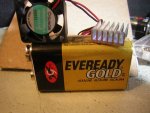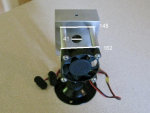- Joined
- Sep 12, 2007
- Messages
- 9,399
- Points
- 113
This is always a compromise: in theory you can passively heatsink anything you like, but the solution would have to be extremely large.
I've got a big problem with the word anything, here. For instance, you can make a copper block a mile cubed, and I can still melt part of it nearly instantly with a standard welding torch. I can think of countless other examples where active cooling is just required by physics.
Although the thermal resistance of standard heat sink materials is very low, there are limits. Pumping water or air to the source increases these limits substantially.





